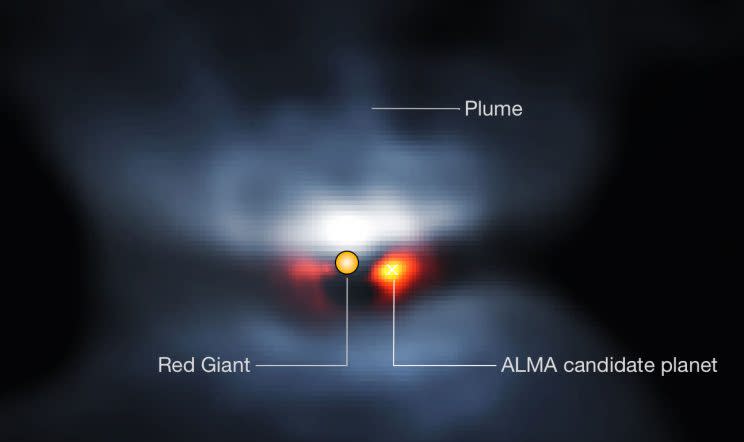Distant star shows how our planet will end - engulfed in the fire of the sun

In the distant future, our sun will expand to a hundred times the size it is now, engulfing Earth in fire – and killing anything that might still live on the surface.
A new image captured by the most powerful radio telescope has offered a glimpse of our fiery future – in the form of a dying star just like our own Sun.
Scientists looked at L2 Puppis – a star which, five billion years ago, was very like our Sun is now.
Our solar system is 4.6 billion years old – whereas L2 Puppis is ten billion years old, offering a glimpse of what will happen to us in the far distant future.
MORE: Polar bear numbers could drop by a third in 40 years, research says
MORE: Police officer killed after huge sinkhole opens up in road in Texas
‘Five billion years from now, the Sun will have grown into a red giant star, more than a hundred times larger than its current size,’ says Professor Leen Decin from the KU Leuven Institute of Astronomy.
‘It will also experience an intense mass loss through a very strong stellar wind. The end product of its evolution, 7 billion years from now, will be a tiny white dwarf star. This will be about the size of the Earth, but much heavier: one tea spoon of white dwarf material weighs about 5 tons.’
‘But the fate of the Earth is still uncertain. We already know that our Sun will be bigger and brighter, so that it will probably destroy any form of life on our planet. But will the Earth’s rocky core survive the red giant phase and continue orbiting the white dwarf?’
Scientists observed the star L2 Puppis using the ALMA radio telescope, which consists of 66 individual radio antennas that together form a giant virtual telescope with a 10-mile diameter.
‘We discovered that L2 Puppis is about 10 billion years old,’ says Ward Homan from the KU Leuven Institute of Astronomy.
‘Five billion years ago, the star was an almost perfect twin of our Sun as it is today, with the same mass. One third of this mass was lost during the evolution of the star. The same will happen with our Sun in the very distant future.’
300 million kilometres from L2 Puppis — or twice the distance between the Sun and the Earth — the researchers detected an object orbiting the giant star.
In all likelihood, this is a planet that offers a unique preview of our Earth five billion years from now.

 Yahoo News
Yahoo News 

